Do you know the feeling when you play a game and wonder “why on earth did I buy this”? Not in a bad way, just seriously asking yourself what made you do it. On paper, For Northwood is a 1p-only (so far so interesting), trick-taking game (not particular exciting stuff) with art that could be from a children’s book (rather flat and cutesy) that was on crowd funding (read: expansive shipping plus taxes). I guess curiosity once again got the better of me: Can a trick taking game work as a solo experience? How addictive is it? Will it be good in repeated plays? Let’s find out …
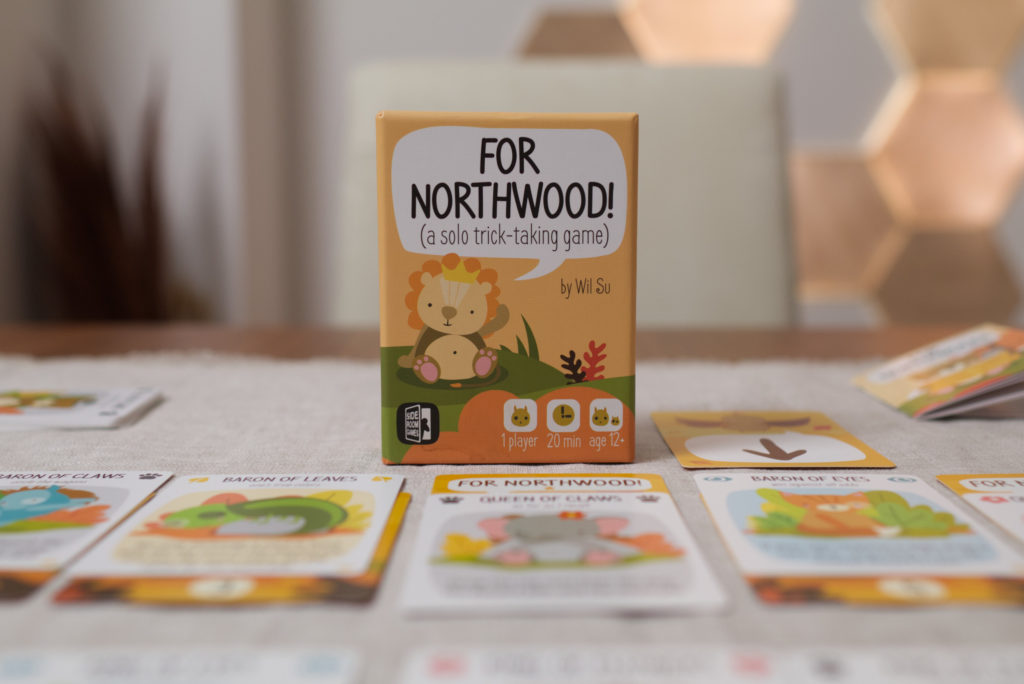
Setup
For Northwood comes in a small box that can best be described as a more solid version of a standard card deck package, kind of like if a pack of cigarettes would be made with super thick cardboard. Inside the box are 65 cards and two small booklets, one for the rules and another for the included campaign. Yes, it’s a trick taker with a campaign. But I’ll focus on the standard game and come back to the campaign later. The cards themselves feel very sturdy and seem to be a good quality kind of plastic instead of paper. I like them and using plastic removes the need for sleeving … which is good because the box is so tight there would be no space for sleeved cards.
Setup is simple: place the 8 fief cards numbered 0 to 7 in a row in ascending order. Shuffle the 24 character cards and start placing on each fief. The first character for each suits is placed underneath the row and becomes one of your 4 allies. The rest go into the fiefs with the condition that the line-up must consist of exactly 2 characters of each suit. Shuffle the “dialog cards” (numbered 1 to 8 in four suits), deal yourself 8 and put the rest underneath the row of allies as the draw pile. Look at your hand of cards and decide which fief to visit first (by putting a special card with an arrow on it to that fief).
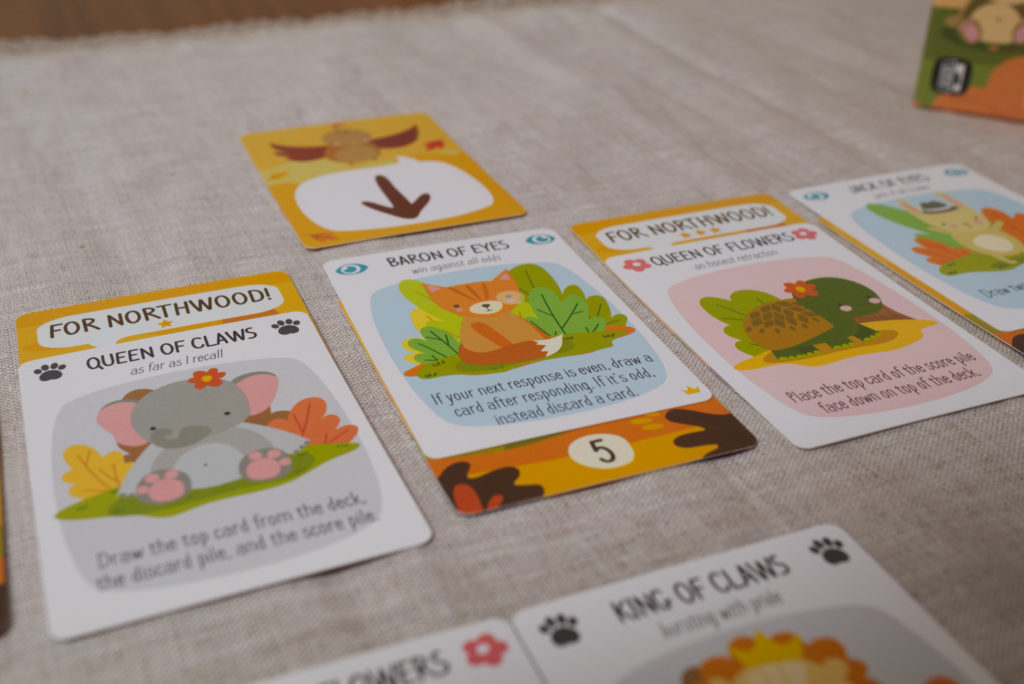
The Turn
On each turn, first you have to decide if you want to use the special power of one of your four allies. Note that each one can only be used once for each fief and the cards are rotated to mark this. These are things like “draw 2 cards, discard 2 cards” or “discard two cards which sum is 9”, so things that manipulate your hand.
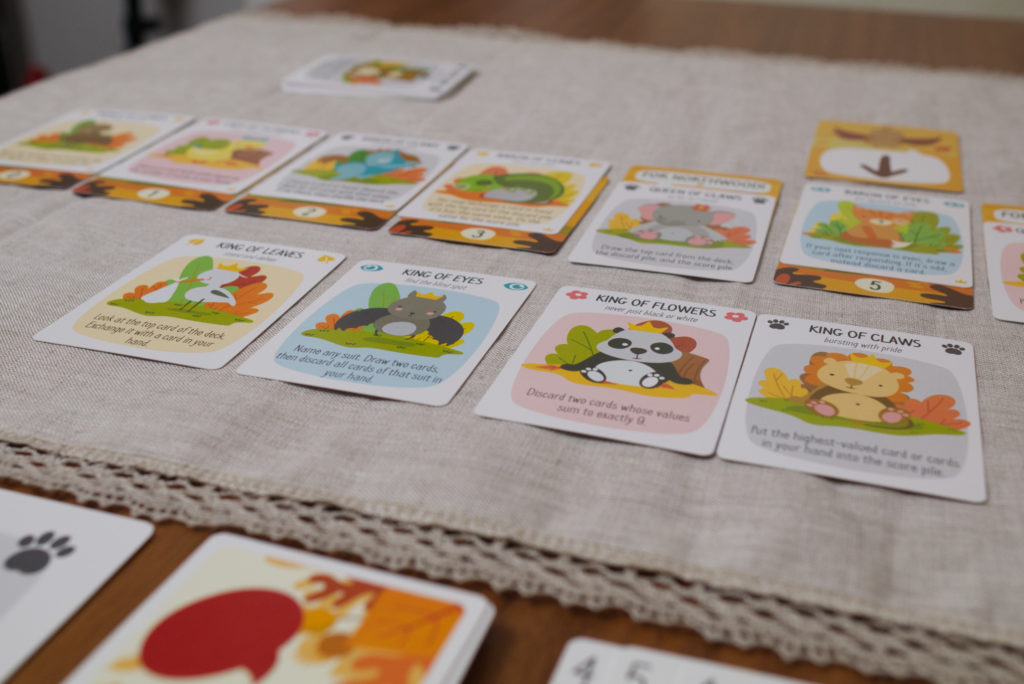
Once that is done, you reveal the top card of the deck and place it to the left. Thematically, this is the “argument” of the character in the fief you are visiting and you need to convince them. This happens by standard trick taking rules: by playing a higher card. If you have a card of the same suit, you must follow. If you place the suit of the character you are arguing with, that beats all non lead-suits. You select a card then then either put it on the pile to the left of the deck if your card is less valuable, or to the right if it is. And why do we do this you might ask: each fief has a number on it that indicates the exact number of tricks you need to win. Get one more or less and the character is gone and the fief is lost to you. Get it right and you not only get the points associated with the fief (symbolised by shifting the character card down on the fief card) but also can select its inhabitant as a one-time ally for a later round.
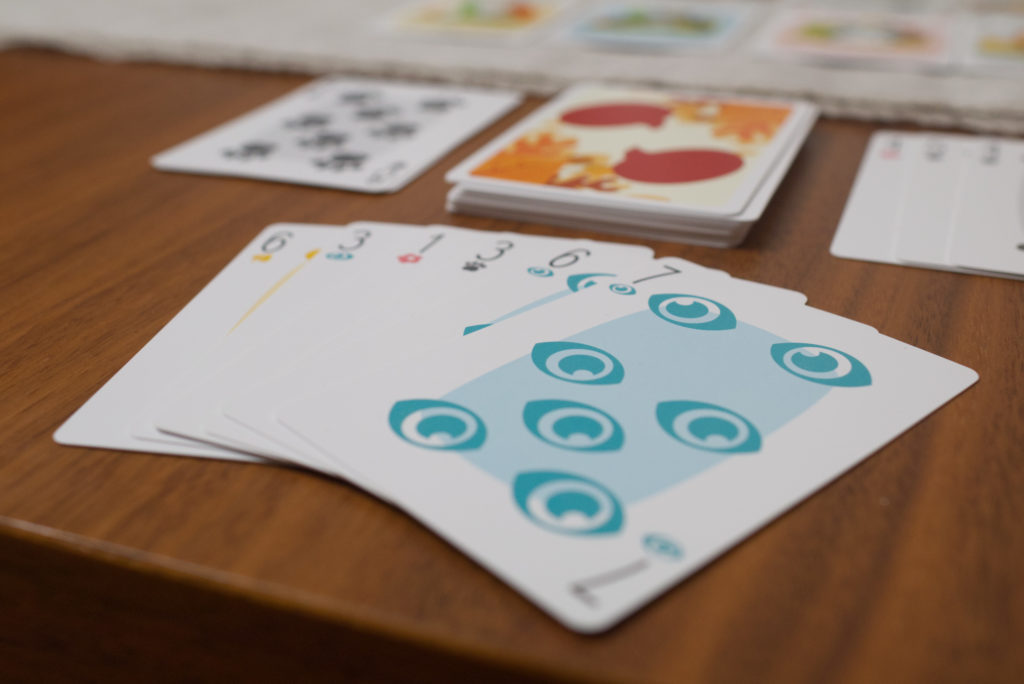
Game End
A play of For Northwood ends once you have visited all fiefs. Each one shows a number of stars with the extremes of 0 and 7 providing four stars and the middle ones providing a mere one star. Get 16 or more stars and you have won. So the challenge is in picking the right order in which to visit the fiefs and smartly using your access to characters you already convinced when trying to pursued the more tricky ones.
Campaign
The campaign book offers variations on the standard game. For example, the very first entry changes it such that you draw 10 instead of 8 cards (making it much harder to score the 0-1 fiefs) AND also tells you that once you have played a card, you must place all cards in your hand of the same number on the same side of the deck depending on whether you won or lost that trick. I really liked the idea and hadn’t really expected the game to contain a campaign. Good thing it does since in my second play ever I already scored 18 out of 20 points and my third one was a perfect game. It might be a fluke but the standard game quickly felt too easy to me. The scenarios in the campaign however spice things up a lot and if that isn’t hard enough, there is also a special challenge mode for each one.
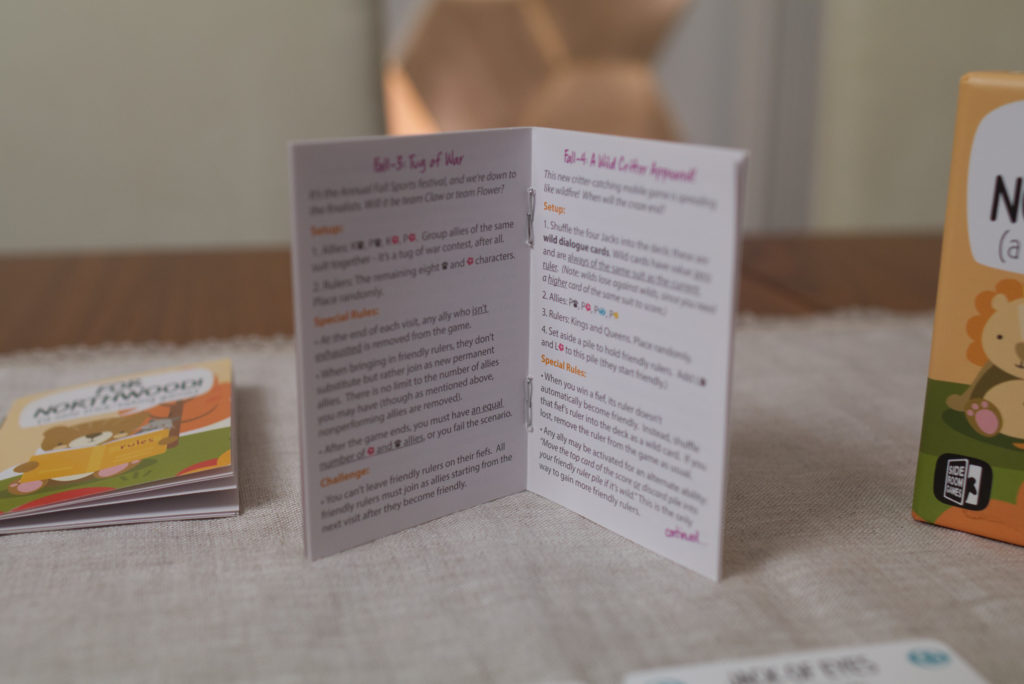
Conclusion
Usually, I have to omit rules or various aspects of a game to give a concise overview of how a game feels to play. But in this case, that’s not necessary. I basically taught you the whole game in those few paragraphs. For Northwood is a simple game and gets you playing in no time. The variable selection of allies and how the characters are distributed among the fiefs produces a different setup every time. So far so good. But is it fun?
Yes and no. Structurally, for Northwood is great. 8 quick rounds, each with just 8 turns, and figuring out which side won is super simple. There is a nice flow and rhythm to it: from setting out the randomised set of characters to persuade, to picking a fief, to 8 turns of making an argument, to re-shuffling the deck after each fief. There is also the whole aspect of which fief to visit when. Sure, it’s dependent on the hand of cards you draw, but also you might want to pick up certain allies before risking the more extreme fiefs. For Northwood has everything that’s needed to make a game addictive, including that campaign that changes up the formula before it can go stale.
The main problem I found was that with every fief I won, there was always that nagging question of whether I had won it by skill or by chance? The system of using your four allies’ special powers allows for a lot of hand control. Also keep in mind that you can look at your cards before making the choice which fief you visit, so there is a good chance of you coming close to hitting the right number of tricks. But it was always those last 1-2 cards where I mentally threw up my hands into the air and thought “there’s nothing I can do now, let’s see if it works our or not”. Kind of like if I would play a trick taker and in the end had to roll a die to see if I won or not.
There is also the undeniable fact that this game’s look does not match what it is. Case in point: I was sitting outside in a public park the other day, playing For Northwood when a guy next to me asked what the heck I was doing. Why was I playing a weird card game by myself that looked like a children’s toy? As I described to him how one plays the game, he got interested, but it was obvious that the child-like look and theme kept him from seriously considering buying a copy. I noticed it myself: the theme unfortunately does nothing for me and I would much have preferred some more detailed graphics, especially for the dialog cards that look rather plain.
So I would says it’s a conditional recommendation for me this time: if you love trick taking games and were always looking for one you could play for yourself, definitely give For Northwood a shot. It works way better than I had anticipated and the campaign gives it a lot longevity. On the other hand, if you are averse to luck, this probably will not be for you. There are a lot of opportunities for risk mitigation using the ally mechanism. But ultimately, there is always that little bit you can’t control …
